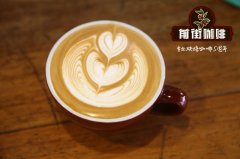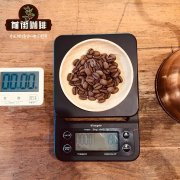Monsoon Malaba wind stain treatment of fine coffee nut herbal flavor in the West Gaozhi Mountains of India

Professional coffee knowledge exchange more coffee bean information please follow the coffee workshop (Wechat official account cafe_style)
India was the first country in Asia to grow coffee, but it was the British who promoted the development of the coffee industry in India at that time.
In the 17th and 18th centuries, the navigation industry was underdeveloped, and it took six months for coffee beans to be transported to Europe by sailboat. The raw beans were placed on the bottom of the barn, absorbing the moisture and salty smell of the sea, and the color changed from green to yellow.
For the same reason, the flavor of coffee beans has also changed. the sour taste has disappeared, but it has unexpectedly developed a strong nutty and cereal flavor, and the mellow thickness has also become higher, which is very popular in Europe.
Monsoon climate
In 1869, the Suez Canal was opened, and shipping moved from the sailing age to the steamboat era, and the sailing time from India to Europe was greatly shortened. As usual, the quality of raw coffee beans is improved and the flavor is better, but Europeans who have been drinking "sea" flavor for a long time are not satisfied.
With fewer and fewer orders from Europe, exporters use the "monsoon" to deal with the coffee and recreate the flavor of the coffee in order to increase the order volume and adjust measures to local conditions.
India is a typical tropical monsoon climate, with a rainy season affected by the southwest monsoon from the Indian Ocean from June to September and a dry season from October to May by the northeast monsoon from Eurasia. The side facing the moist southwest monsoon is famous-the Malaba Coast (Malabar).
The step of monsoon soaking method & flavor
Adhering to the policy of "creating conditions without conditions", Indian bean merchants take advantage of the climate to pile up beans a few months in advance to accept the "baptism" of the monsoon.
Step 1: place coffee beans
Every year around June, there is a monsoon in southwestern India, where coffee beans are spread to the west of the plant, with a thick bottom ranging from 10 to 20 centimeters.
Step 2: contact with the monsoon
Open the window so that the southwest wet and salty monsoon can blow through the coffee bean table in the factory, so that all the coffee beans are exposed to the extremely high humidity air.
Step 3: flip
Turn the coffee beans every day to make them damp evenly. After a week, put the coffee beans loosely in bags and pile them up. The bags will not be full so that the monsoon can blow through the bags.
Step 4: anticorrosion
The bag is reloaded and piled once a week until the coffee beans change color and taste, usually for three to four months.
Step 5: deworming and screening
The coffee weevil is repelled by smoking. After hand-selecting coffee beans, remove those that are not affected by the "monsoon", and then bag them for export.
Flavor characteristics
The bean body is yellow, the shape is expanded by one to two times, the density and weight are reduced, the bean is soft and light, the acidity is low, and it has a strong and wild aroma.
Product information
Product name: Indian monsoon Malaba wind stain treatment
Country: India
Producing area: West Gaozhi Mountains in southern India
Altitude: 1100-1200
Treatment methods: wind stains, sun exposure
Varieties: Kents, S795, Catimor
Grade: AA
Baking degree: medium depth
Flavor: sea salt, cereal biscuits, malt, plum, cocoa milk
END
Important Notice :
前街咖啡 FrontStreet Coffee has moved to new addredd:
FrontStreet Coffee Address: 315,Donghua East Road,GuangZhou
Tel:020 38364473
- Prev

Sumatra Aceh fine coffee beans 20 mesh long beans Mantinen flavor introduction
Professional coffee knowledge exchange More coffee bean information Please pay attention to coffee workshop (Weixin Official Accounts cafe_style) When it comes to Asian coffee, the first impression of coffee lovers is thick and steady. Asian coffee is more full-bodied than Central and South American beans and African beans. It is less sour and has a slightly woody, herbal, spicy and earthy flavor. The deep aroma is higher than the rising acid aroma. Asia by
- Next

Introduction of Costa Rican Red Pearl Meros Kaddura Sunshine Sonora Manor
Professional coffee knowledge exchange more coffee bean information please follow the coffee workshop (Wechat official account cafe_style) Costa Rica Red Pearl Meros Kaddura Sun batch Red Pearl Meros Sonora Manor is a famous estate in Costa Rica, located in the central valley at the foot of the Poal volcano, coffee grows on rich volcanic soil and a variety of exotic objects
Related
- Detailed explanation of Jadeite planting Land in Panamanian Jadeite Manor introduction to the grading system of Jadeite competitive bidding, Red bid, Green bid and Rose Summer
- Story of Coffee planting in Brenka region of Costa Rica Stonehenge Manor anaerobic heavy honey treatment of flavor mouth
- What's on the barrel of Blue Mountain Coffee beans?
- Can American coffee also pull flowers? How to use hot American style to pull out a good-looking pattern?
- Can you make a cold extract with coffee beans? What is the right proportion for cold-extracted coffee formula?
- Indonesian PWN Gold Mandrine Coffee Origin Features Flavor How to Chong? Mandolin coffee is American.
- A brief introduction to the flavor characteristics of Brazilian yellow bourbon coffee beans
- What is the effect of different water quality on the flavor of cold-extracted coffee? What kind of water is best for brewing coffee?
- Why do you think of Rose Summer whenever you mention Panamanian coffee?
- Introduction to the characteristics of authentic blue mountain coffee bean producing areas? What is the CIB Coffee Authority in Jamaica?

